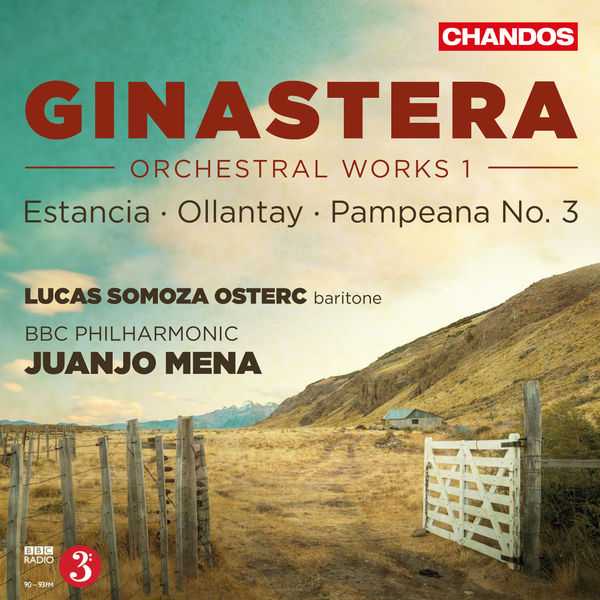

Composer: Alberto Ginastera
Performer: Lucas Somoza Osterc
Orchestra: BBC Philharmonic Orchestra
Conductor: Juanjo Mena
Format: FLAC (tracks)
Label: Chandos
Catalogue: CHAN10884
Release: 2015
Size: 1.1 GB
Recovery: +3%
Scan: yes
Pampeana No. 3, Op. 24
01. I. Adagio contemplativo – Poco più mosso (Revised 1967)
02. II. Impetuosamente (Revised 1967)
03. III. Largo con poetica esaltazione – Piochissimo più lento (Revised 1967)
Ollantay, Op. 17
04. I. Paisaje de Ollantaytambo
05. II. Los guerreros
06. III. La muerte de Ollantay
Estancia, Op. 8
07. I. Introducción y escena
08. II. Pequeña danza
09. III. Danza del trigo
10. IV. Los trabajadores agricolas
11. V. Los peones de hacienda
12. VI. Los puebleros
13. VII. Triste pampeano
14. VIII. La doma
15. IX. Idilio crepuscular
16. X. Nocturno
17. XI. Escena
18. XII. Danza final. Malambo
Impressive in our ongoing, very successful Spanish music series, the BBC Philharmonic and its chief conductor, Juanjo Mena, also explores the works of the Argentinean composer Alberto Ginastera in three orchestral volumes. Not only acknowledged as a leading South-American composer of his day, Ginastera is also seen as one of the heroes of Latin-American music in general, whose enduring source of inspiration was Argentina itself: its pre-Columbian legacy on the one hand and the vast landscapes of the pampas on the other. Indeed, if Ollantay is inspired by the former, and more especially by a dramatic poem of Inca origin, Ginastera turned to the latter for the setting of his second ballet, Estancia, based on the life of the gauchos who work in those wide open spaces.
The essential genre of music in this piece is the malambo, an exclusively masculine, competitive traditional dance, far from the seductive tangos of Ginastera’s now more famous compatriot and pupil Astor Piazzolla. While the landscape is the same in Pampeana No. 3, the music is more abstract and contrasted, marking the transition from what the composer called a compositional period of ‘objective nationalism’ to a ‘subjective one’.



